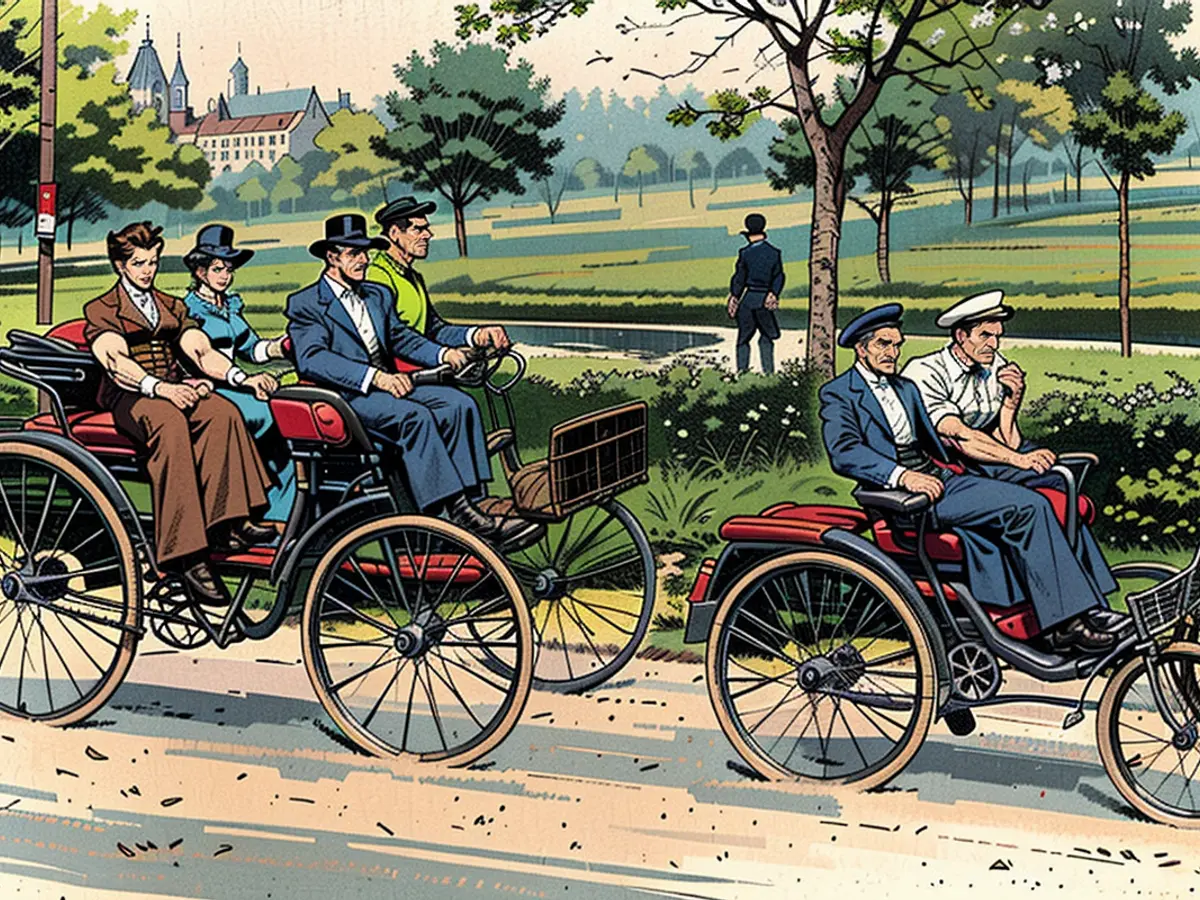How Carl and Clara brought the forerunner of the A-Class in motion
In the Future, Mercedes-Benz will Drive Forward without the A-Class. 130 years ago, it was the Benz Velo that introduced the world's first compact car into mass production. Carl Benz and his daughter Clara cleverly promoted the expensive Velo, which was taken from them.
The popular Mercedes-Benz A-Class, as we know it, is an outgoing model, at least with conventional propulsion. On the other hand, Mercedes is currently giving it an extension - exactly on the 130th anniversary of the little Benz Velo, the progenitor of the A-Class.
The Velo, or Motor-Velociped, as Carl Benz, the patent-auto inventor, named the first compact car produced in series in 1894, set the production process at the beginning. Until then, Carl Benz, Gottlieb Daimler, and all other auto pioneers had set their sights on tricycles or motorized carriages, which were extremely expensive and built in small, mostly one- or two-digit quantities upon order. The affordable Benz Velo brought automotive progress into swift motion.
The Largest Car Manufacturer in the World
Suddenly, a motor car could be bought off the shelf; Carl Benz commented on this in an interview with the "Allgemeine Automobil-Zeitung" (AAZ) in retrospect: "This vehicle was literally wrenched from our hands. What we produced was sold." In truth, the 2.25-meter-long and open two-seater (an optional child seat was available in the back, the world's first against the direction of travel) reached sales figures that propelled the Mannheim Benz factories to become the largest car manufacturer in the world. A success that Carl Benz also owed to his wife Bertha and his daughter Clara. The women showed how practical the Velociped was.

DRP 37435, this number changed the world, it is mentioned in the same breath as the invention of the printing press by many historians. Behind 37435 lies the patent application for the 1886 presented Benz-Tricycle as the first car with a single-cylinder four-stroke engine. Years of research had gone into this 16 km/h rolling danger, which aimed to put horses out to pasture.
Without Bertha Benz, it would not have happened
However, without his wife Bertha, Konstrukteur Benz would not have been able to realize the start of the automobile industry. In his 1871 founded first Mannheimer workshop, he lacked liquidity, so his fiancée Bertha intervened and secured the realization of her future husband's visions with her dowry.
When the patent motor car still found few buyers after two years, it was again Bertha Benz who clarified the difficult situation by embarking on a daring long-distance journey from Mannheim to Pforzheim in 1888 and demonstrating the practicality of the car in an effective way.

Whether Bertha Benz or her daughter Clara had the idea for the optional child seat for the 1894 launched model Velo is not recorded. But once again, the women in Carl Benz's family showed how marketing works.
From Velociped to "Velo"
This time, Clara took the wheel of the 2.25-meter-long vehicle, whose name refers to the fact that Carl Benz was also involved in the development of bicycles, then called "Velocipeds." In contrast to the heavy motor carriages, the "Velo" was almost bicycle-like light, robust, and even reached 20 km/h. The front and rear axles were rigid, revolutionary was, however, the axle suspension patented by Benz in 1893, which was operated via a vertical steering column in the vehicle's center.
A motor installed under a wooden canopy, with a capacity of 1.05 liters, produced initially 1.1 kW/1.5 PS at 450 RPM. However, it managed to cope with the gradients, thanks to a two-stage flat belt transmission. For comfort, there was an 18-liter fuel tank under the seat, although the consumption of around 14 liters per 100 kilometers limited the range. In the early test drives of his first patent-motor car, Carl Benz had to be accompanied by his son, who continuously filled the fuel canister.

Easy to operate
Traveling with the relatively easy-to-operate Benz Velo was enjoyable, as Clara demonstrated during extensively documented tours, such as along the scenic Bergstraße. Those who thought that at some Benz competitors, up to nine levers and pedals had to be pulled by the driver to activate power transmission shifts, carburetor mixture, throttle valve, ignition magneto, or brakes, rejoiced over such a simple and robust vehicle as the Benz Velo.
As it was in 1894 regarding the reliability of other automobiles, the first motorsport event in history illustrated this: Out of 102 registered participants for the 126-kilometer Paris-Rouen race, only 17 reached the finish line. Cars with Daimler engines won the (shared) first prize, and a Benz vehicle finished in fifth place.
Two years later, a Benz Velo or its British license version, "Arnold Motor Carriage," successfully participated in the famous Emancipation Run from London to Brighton, marking the beginning of the automobile era in Great Britain. Behind the wheel of the "Arnold Motor Carriage": A self-confident woman, who could easily handle the now slightly more powerful Benz vehicle - it also had a three-speed transmission and pneumatic tires in its price list.
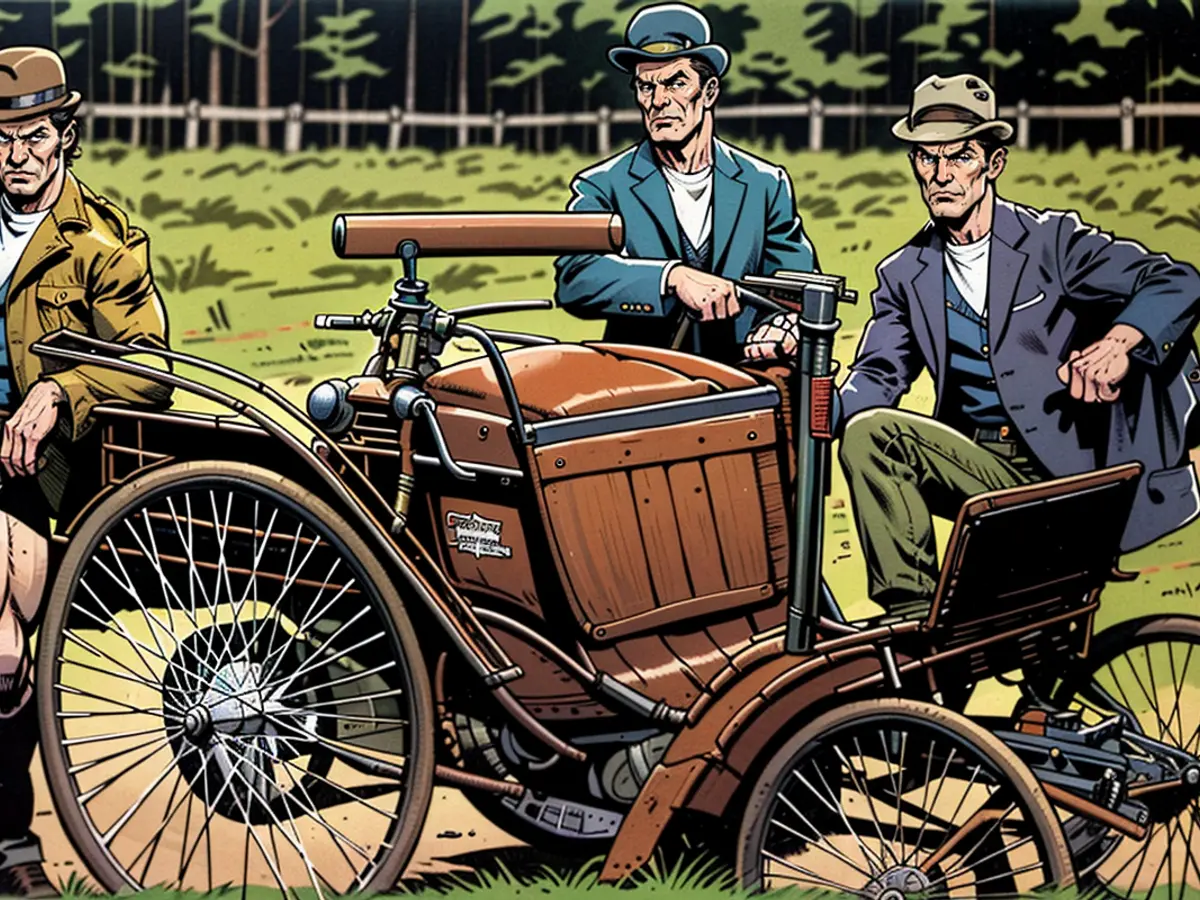
From a car for the wealthy to a genuine means of transportation
Benz succeeded in surpassing all others: His Velo went into mass production, found over 1,200 buyers including the luxury version Benz Comfortable by 1902, and he became the leading automobile manufacturer - even surpassing Daimler. It was a significant sum for those times, but for the first time, it was affordable not only for the wealthy elite. So, a middle-class craftsman in Bad Godesberg, Bonn, could afford the Benz Velo and thus conduct business visits or, like Clara Benz, go on Sunday tours.
By the beginning of the 20th century, the company Benz was a global benchmark when it came to sales figures and technical progress. Then, Daimler pushed ahead with Mercedes models until 1926, when Benz & Cie. and the Daimler-Motoren-Gesellschaft merged to form Daimler-Benz AG. Only in 1997 did the Mercedes-Benz brand return to its roots as a manufacturer of small, high-demand premium cars, similar to those that Carl, Bertha, and Clara Benz appreciated: The 3.58-meter short A-Class has enjoyed sales success in its four generations - how long this will last remains uncertain.
Chronik

1886: On January 29, 1886, Carl Benz files a patent for his Motorwagon (Length 2.70 meters, Single-cylinder four-stroke engine with a displacement of 0.954 liters, power 0.55 kW, max speed 16 km/h). Patent number 37435 is considered the birth certificate of the automobile. The "Neue Badische Landeszeitung" reports on the first public outing on July 3, 1886: "A vehicle propelled by Ligroin-gas (Benzine), which was constructed in the Rheinische Gasmotorenfabrik Benz & Cie., was tested today on the Ringstraße and the test is said to have been successful". The very first test drives had already taken place in the previous year 1885, for secrecy reasons, in the factory yard.
1887/88: The Benz Patent-Motorwagon Model I proves that Carl Benz's idea works. He builds several models in quick succession, which have numerous detail improvements. The Model II, whose motor produces 1.1 kW, is originally designed as a tricycle, but is then experimentally converted to four wheels. The car includes an axle suspension, which is tested in it, a step towards modern automobiles. The Model III is so improved that about 25 units are sold. It has a motor with up to 2.21 kW and two forward gears.
1888: Attention for the automobile increases after a demonstration drive by Bertha Benz in August of that year. The wife of Carl Benz takes her two sons Eugen and Richard on the first long-distance journey in automotive history. She travels with a three-wheeled Patent-Motorwagon Model 3 from Mannheim to Pforzheim and thus demonstrates the reliability of the automobile.
1889: Wilhelm Maybach, the brilliant engineer working with Gottlieb Daimler, develops the Stahlradwagen and, like the Benz Patent-Motorwagen, a chassis detached from the carriage-building industry. The modern Daimler Stahlradwagen makes its debut at the World's Fair in Paris. The new two-cylinder V-engine is the groundbreaking modern powertrain for the elegant-looking Stahlradwagen, named for its iron wheels. However, the public does not show the expected interest in the Stahlradwagen.
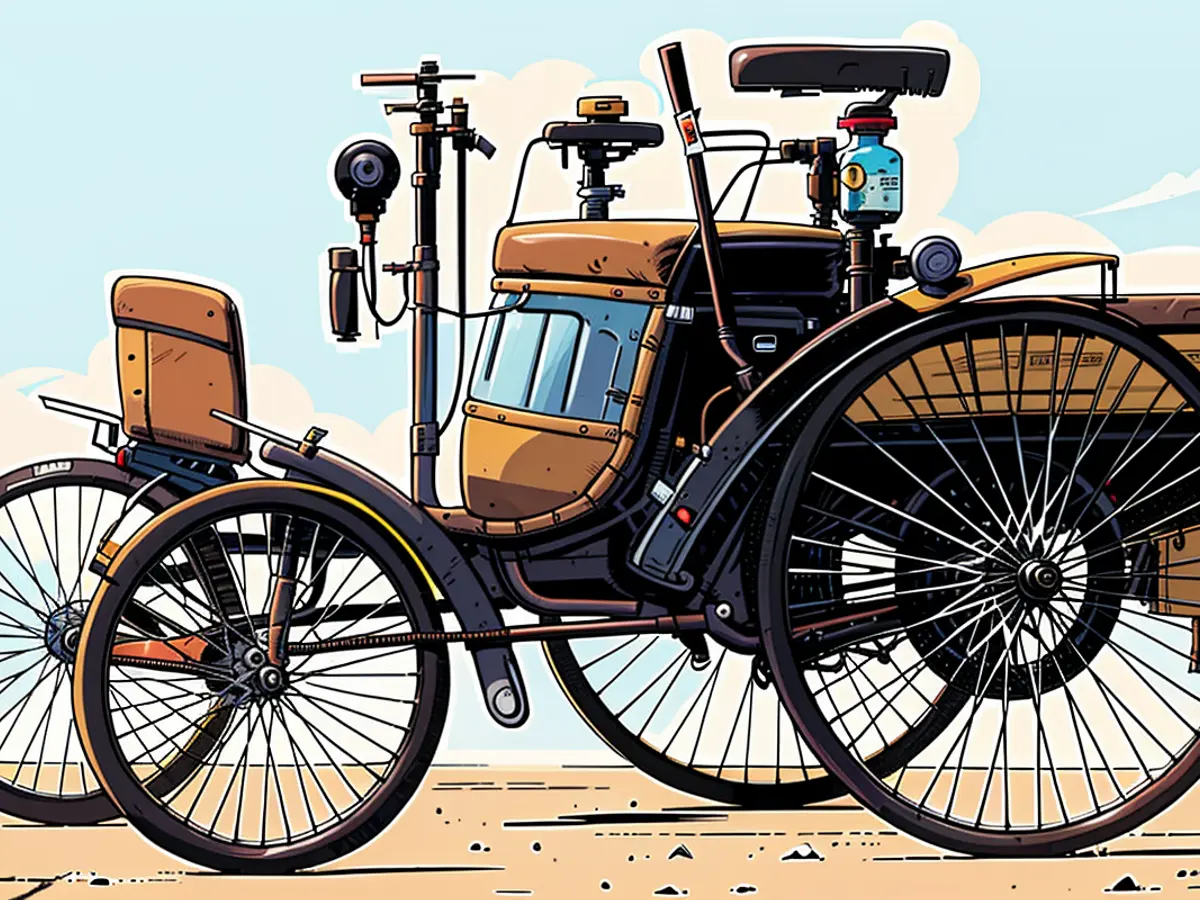
1893: The first imported automobile sold in the USA is a Benz. It was exhibited at the World's Fair in Chicago, and a Daimler car was also on display. Carl Benz presents a further developed axle suspension, which he files for a patent on February 28. The patent is granted under the number DRP 73 515. The axle suspension is installed in the Benz Victoria and Vis-à-Vis models that same year, which are significantly larger than the upcoming entry-level type Velociped. The name Velociped comes from the two-wheeled bicycle, also known as a velocipede, because it is propelled by the muscle power of the legs, Latin for "fast foot". Carl Benz has always been fascinated by the bicycle and its technology. Already in 1867, the later automobile pioneer bought a bicycle with iron-tired wooden wheels and went on extensive tours across the country.
1894: Benz & Cie. present a new model, the first one designed for mass production, a compact automobile. A delicate, 280 kilograms lightweight automobile with a lying single-cylinder engine of 1.1 kW/1.5 PS power and thus the first mini car. In the sales catalog it is stated for maximum speed and driving behavior: "The Velociped covers around 20 kilometers per hour in an hour and overcomes inclines up to 10 % on good roads." It costs "completely equipped with lamps" 2000 Mark
1895: The Benz family goes on an excursion along the Bergstraße with two vehicles, a Velociped and a large Phaeton. This attracts much attention, as Clara, the daughter, is driving the Benz Velociped, and Richard, the son, is in the Benz Phaeton. Benz grants a license to the British machine builder Arnold to produce the Motor-Velociped. The "Arnold Motor Carriage" is one of the first British automobiles
1896: An Arnold Motor Carriage participates in the legendary first Emancipation Run from London to Brighton in November 1896; William Lawson, initiator of the long-distance race, which celebrates the abolition of the Red-Flag-Acts, holds the Daimler-Motors license rights for Great Britain as a major shareholder of the British Motor Syndicate. Meanwhile, Daimler engines drive the British and French automobile industry significantly. Carl Benz renews the Velo model program in this year with stronger motorizations and additional equipment options. As a luxury version of the Motor-Velociped, the Benz Comfortable appears with a longer chassis, optional third gear, more elaborate seat upholstery, a child seat facing the driving direction, and a starter crank. As optional equipment, pneumatic tires are available. By the end of 1897, Carl Benz develops the Contra-Motor, the ancestor of later boxer engines
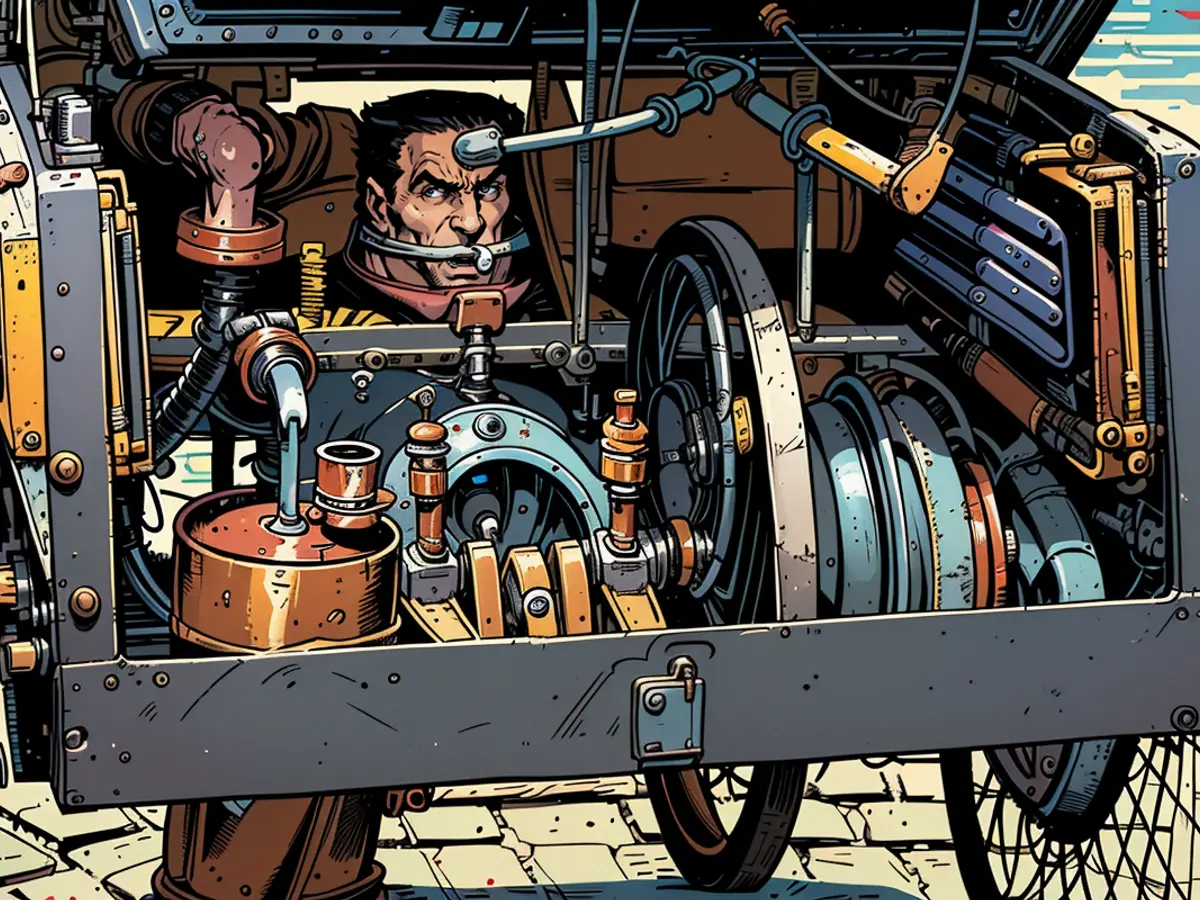
1897: In this year, the 1000th Benz car is built
1898: The Benz Velo program is expanded, for an additional 200 Mark, a stronger motor with 2 kW/2.75 PS power is available. A sunshade (Parasol) costs 100 Mark as optional equipment. The Velociped weighs 320 kilograms. The Velociped Comfortable debuts as a luxury version of the Velociped. The stronger motor is part of the standard equipment, and the sales price is 2,500 Mark. The Velociped Comfortable features an elaborate upholstered seat for driver and passenger, as well as a child seat facing the driving direction. As optional equipment, pneumatic tires ("Pneumatiks", 350 Mark) are available. PR photos are also taken with the Benz family
1899: Benz & Cie. develops into the world's largest automobile manufacturer by the turn of the century, delivering 592 cars in this year. Velociped and Velociped Comfortable are standard equipped with a third gear transmission. From October, Benz & Cie. simplifies the naming of the two models. They are now simply called Velociped and Comfortable, and they are standard equipped with a 2.2 kW/3 PS strong single-cylinder engine. The Velociped costs 2,500 Mark, the Comfortable 2,800 Mark
1900: The entry-level Benz Motor-Velociped goes into its last production year, but the production of the Benz Comfortable runs until the end of 1902 with a final output of 3.3 kW/4.5 PS power. Benz produces 603 vehicles in this year, a new record
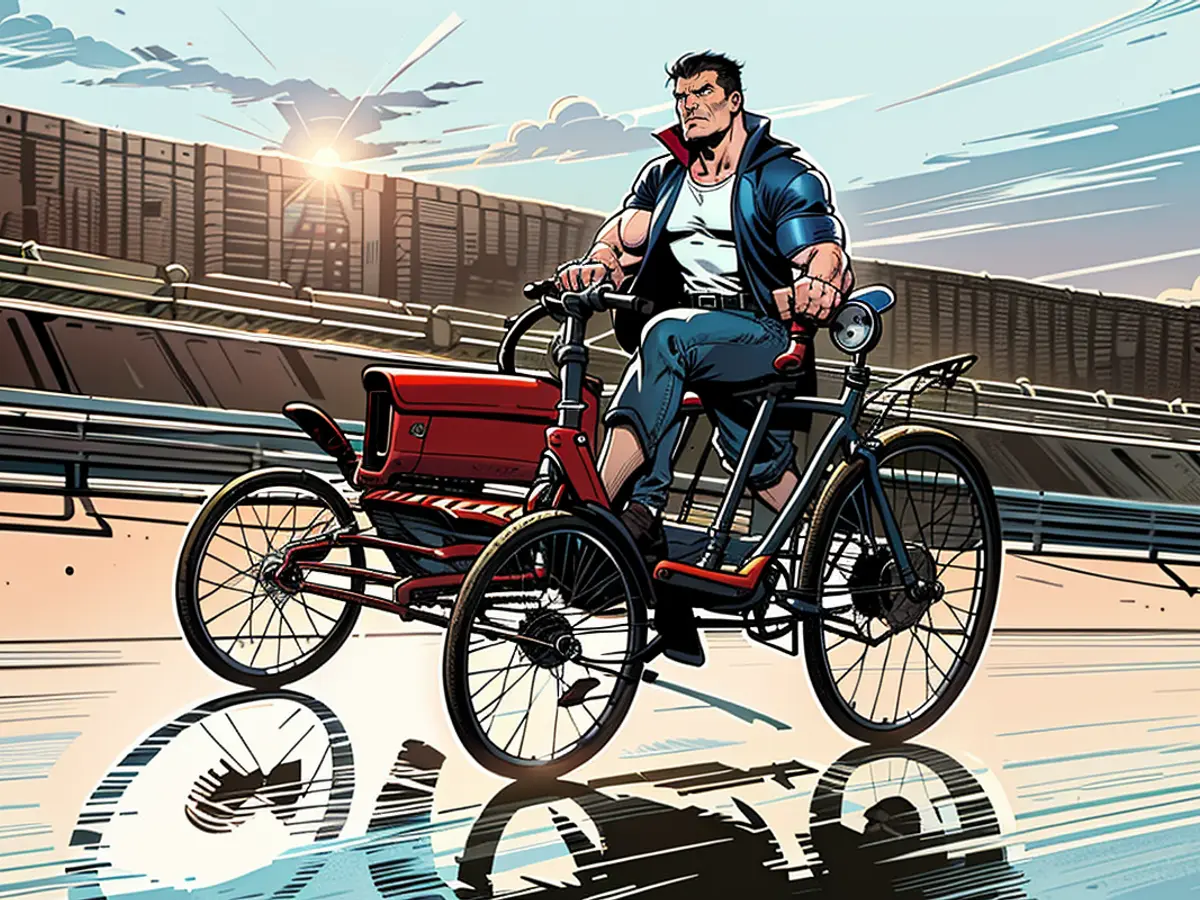
1901: The Benz Velo type family is successful in export as well. This is evident in the trilingual catalog from 1901, in German, English, and French. In France, the "Velo" is offered as "Éclair" ("Blitz")
1902: After delivering over 1200 units, the production of the Benz Velo is finally discontinued. Benz enters an economic crisis because its cars cannot compete with the modern Daimler technology in the newly introduced Mercedes-Models. Benz loses customers, sales decline. Carl Benz rejects internal demands for more powerful vehicles and also refuses motor racing engagement
1903: Automobile pioneer Carl Benz leaves the company that bears his name, but returns a year later as a supervisory board member to Benz & Cie.
1904: The Benz Parsifal model, launched two years earlier, is revised and results in increasing orders and the return of the company to profitability

1906: Things continue to go well for Benz, in no small part due to motorsport successes. In the famous Herkomer Race, a Benz 40 PS finishes second, and the following year, a Benz 50 PS wins
1909: In an interview with the "Allgemeine Automobil-Zeitung" (AAZ), Carl Benz recalls the model Velo: "This vehicle was literally torn from our hands. What we produced was sold."
1926: Benz & Cie. and the competing Daimler-Motoren-Gesellschaft merge to form Daimler-Benz AG
1993: Mercedes-Benz returns to the compact car market with the five-door study A, first shown at the IAA in September as the first precursor to the A-Class
1997: The 3.58-meter long, five-door Mercedes A-Class makes its world debut and enjoys sales success in several generations. However, the familiar A-Class is expected to disappear in the future
2024: For the 130th anniversary of the Benz Velo, Mercedes restores and makes drivable a Velociped exhibited at the Mercedes-Benz Museum and presents the first mass-production car model in history at various public events.
- The historical Benz Velo, produced in 1894 by Mercedes-Benz Group AG, revolutionized the automobile industry due to its affordability and the marketing efforts of Bertha and Clara Benz.
- In celebration of the 130th anniversary of the Benz Velo, Mercedes-Benz is giving the A-Class an extension, drawing parallels to the progenitor of the modern compact car that set the automobile industry in motion.
- At the event of the times, a vintage Benz Velo, a historical Mercedes-Models, was showcased alongside modern vehicles, highlighting the significant evolution of automobiles from the simple compact car to the advanced and luxurious Mercedes-Benz vehicles of today.
